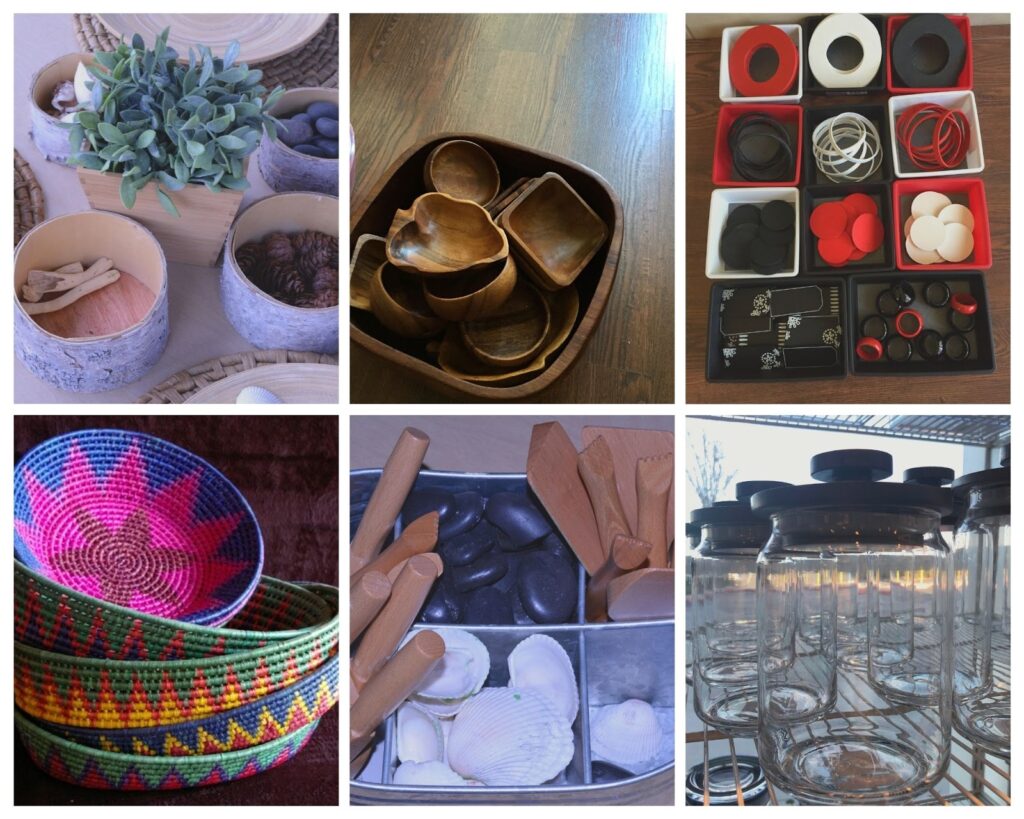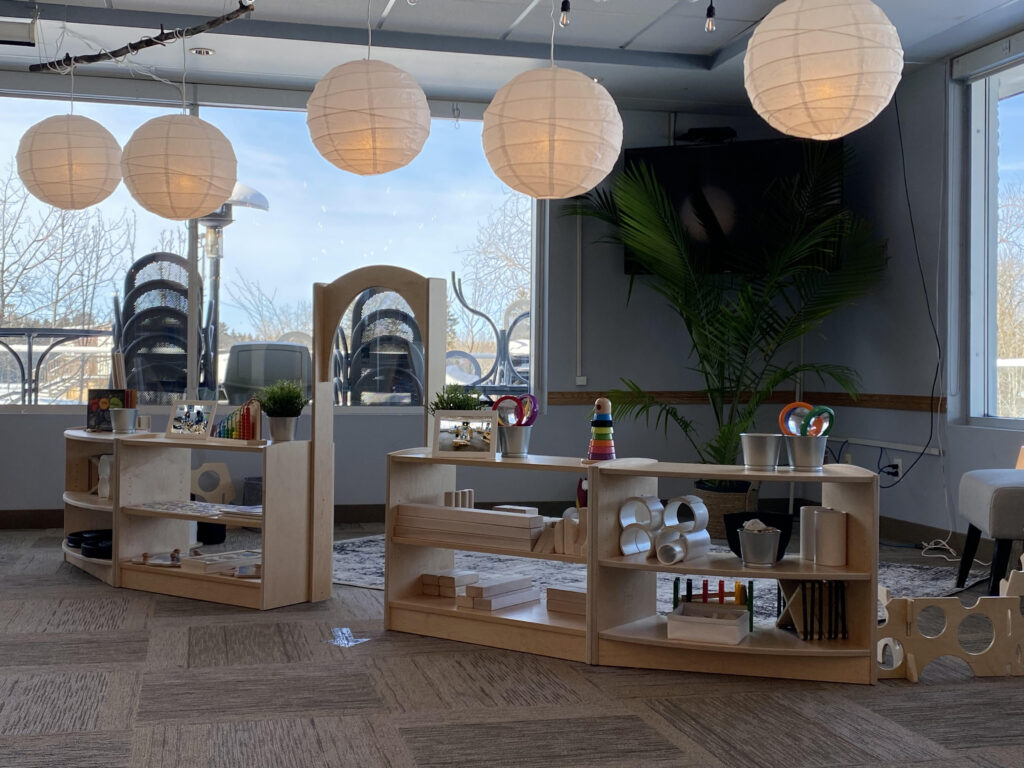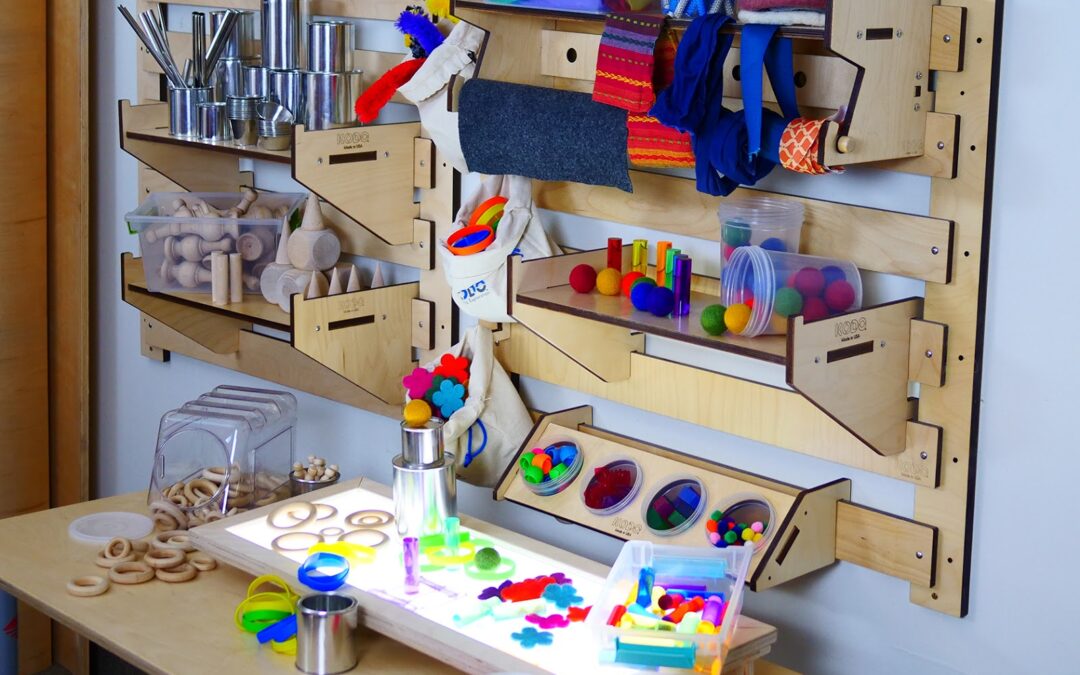Co-Authored By:
Miriam Beloglovsky – Playful Transformation
Kasey Kile, Director of Professional Development – Kodo Kids
Diane Spahn, Director of Education – Kodo Kids
Many questions that we hear involving Loose Parts have to do with how we organize and display the Loose Parts.
A simple concept to consider when organizing materials is “less is more”.
When there is a combination of too many types of Loose Parts, children may find it difficult to choose or make decisions on the different ways they can use them. It is important, though, to consider having more than one of the same type of Loose Parts to assist children in organizing their ideas and increasing their creativity.
To get started, consider the following:
1. Establish Loose Parts Categories:
As you begin collecting Loose Parts for your environment, it might be helpful to categorize them. Through this process, it will assist in ensuring that you have a variety of Loose Parts to further children’s innovative capacities. Some examples of categories include:
- Metal
- Plastic
- Natural
- Textiles
- Paper
- Ceramics
- Wood
- Miscellaneous

2. Plan Time to Organize
Organization takes time. It is important to create time in your schedule to organize and sort the various Loose Parts that you are incorporating into the environment. To prevent yourself from getting overwhelmed, it might be beneficial to segment short amounts of time or have a friend or teaching partner assist in this organization process.

3. Select the Containers:
This is an important aspect of organizing Loose Parts. As you consider the containers to display the Loose Parts, do not forget about the existing shelves you already have in your environment. This will help you decide the size and shape of the containers. When selecting the containers, consider the following:
- Baskets can add culture and interest to the environment. For example, many baskets from Africa are handwoven, easy to clean, are soft, and do not have rough edges. These beautifully made baskets can be great additions to the Infant/Toddler environment.
- Wooden boxes come in a variety of shapes and sizes that can be easily sealed for durability.
- Acrylic and plastic containers can be considered, but keep simplicity in mind when making your selections. Look for those that are neutral in color or transparent. Containers that are too colorful or garish may distract from the Loose Parts and make the display too overwhelming.
- Metal trays and baking sheets make wonderful containers to store Loose Parts. Combining metal Loose Parts with metal containers can create a cohesive message.
- Fabric or felt bowls are another option that can be used to store Loose Parts. These types of containers bring a variation to the display and storage available.

4. Consider Accessibility and Availability
Consider the space that you have available in your environment. If you have a large classroom, then have the opportunity to utilize Loose Parts in all areas of the environment. However, if your space is smaller, it might be beneficial to rotate the Loose Parts to add complexity to children’s play. When rotating materials it is important to observe, document, and make considerations to children’s interests and ideas. Additionally, make Loose Parts accessible to children by placing them on shelves that allow them to independently use them in their play.
If you are interested in learning more about Loose Parts, join our online Professional Learning Community here.


